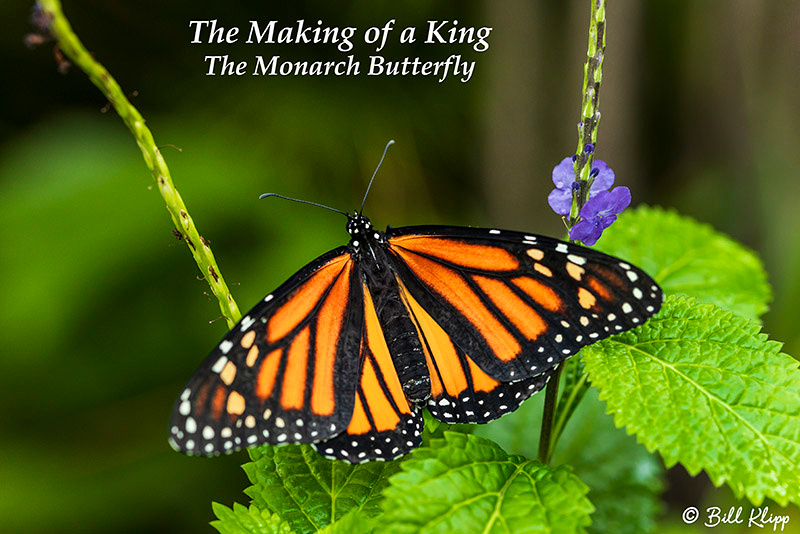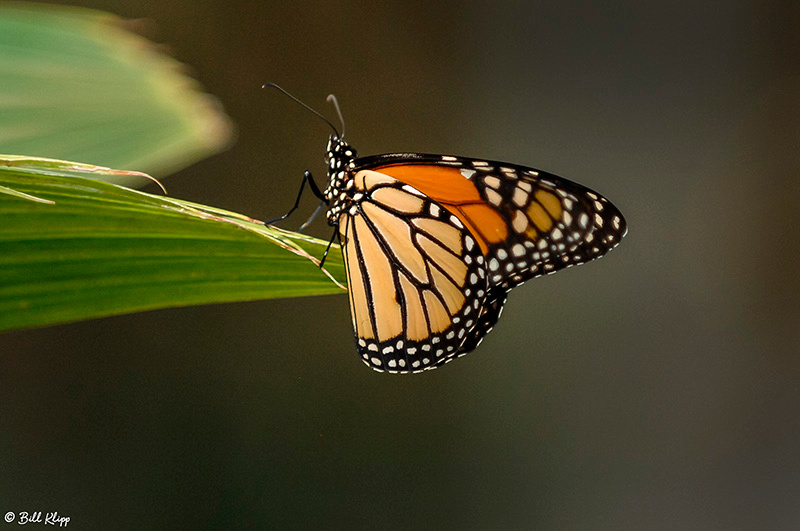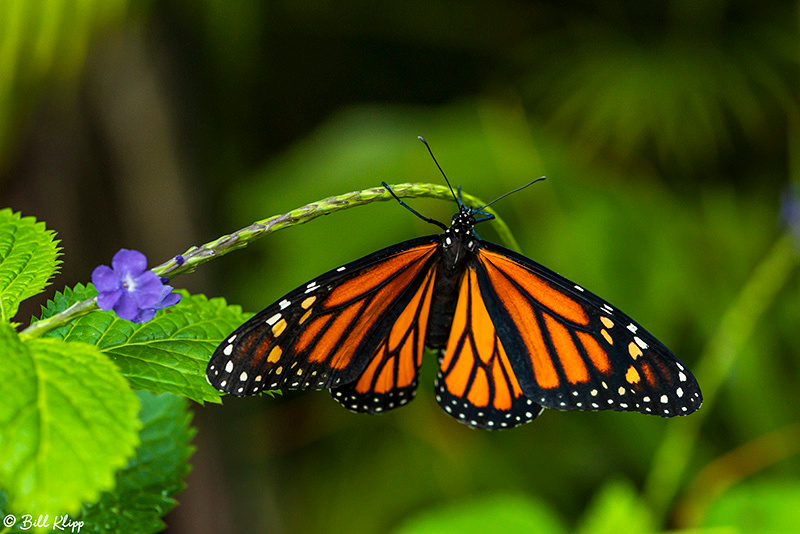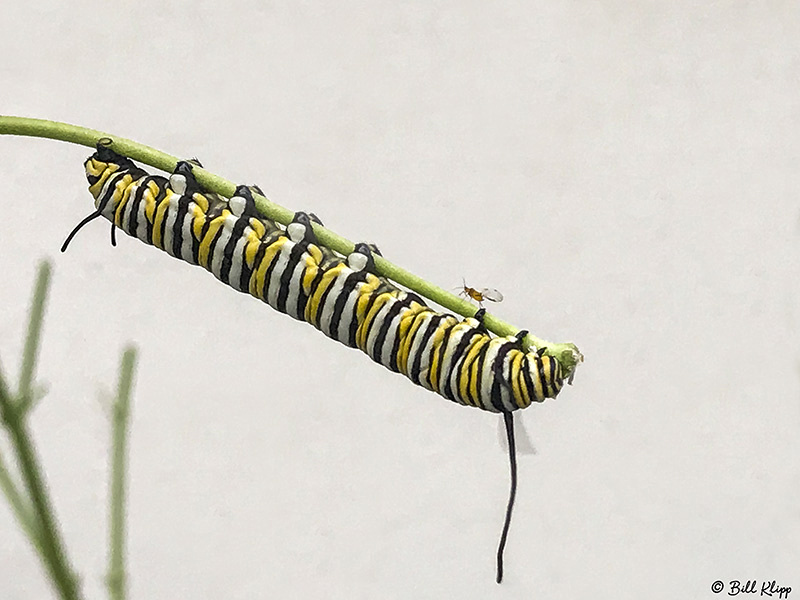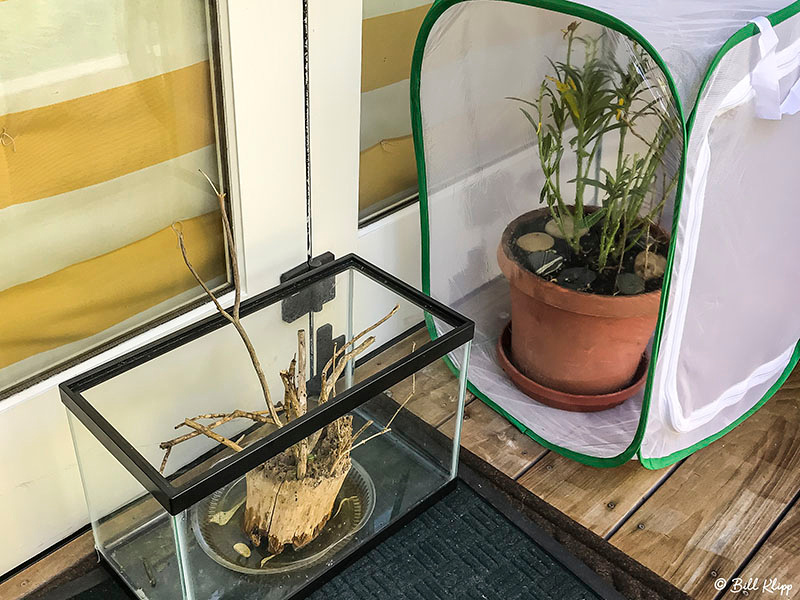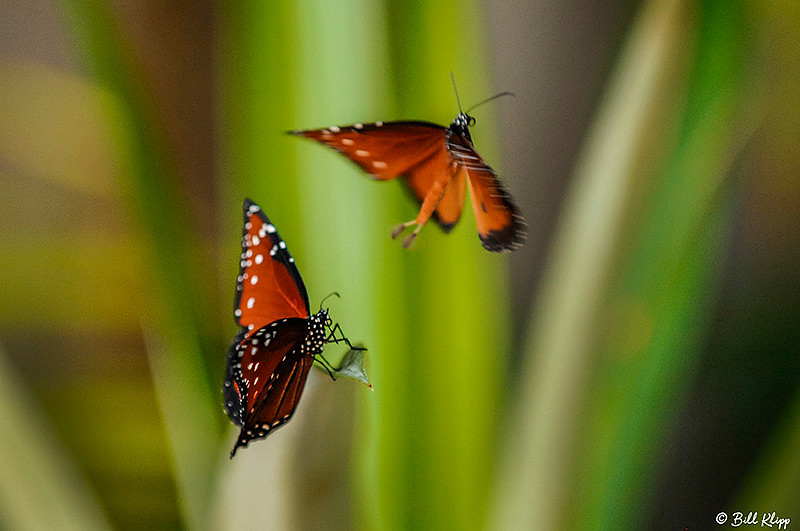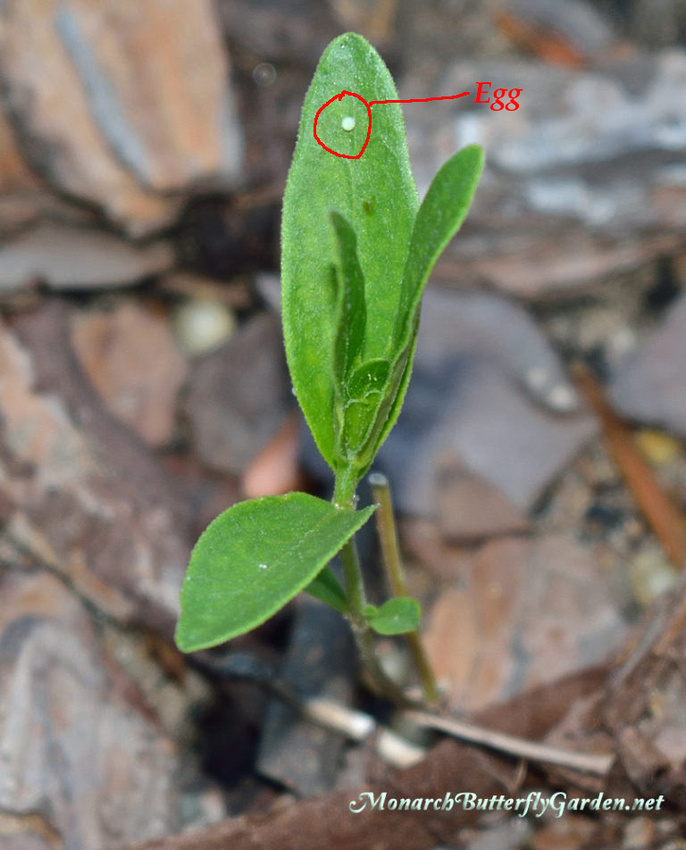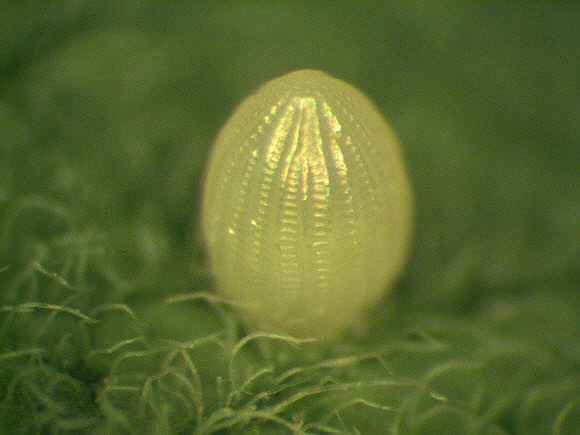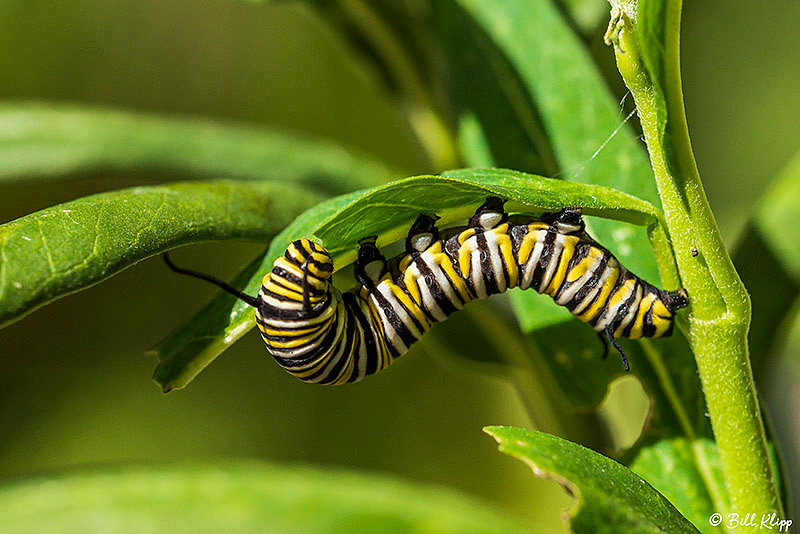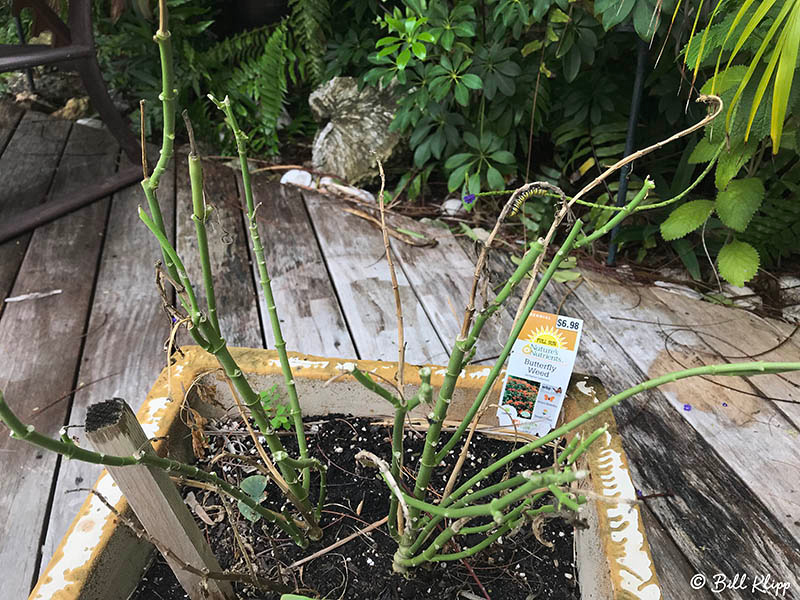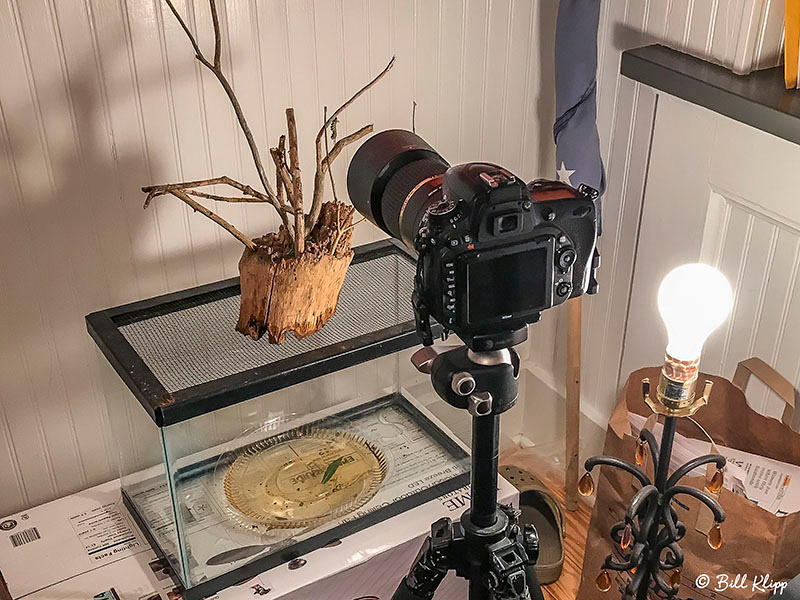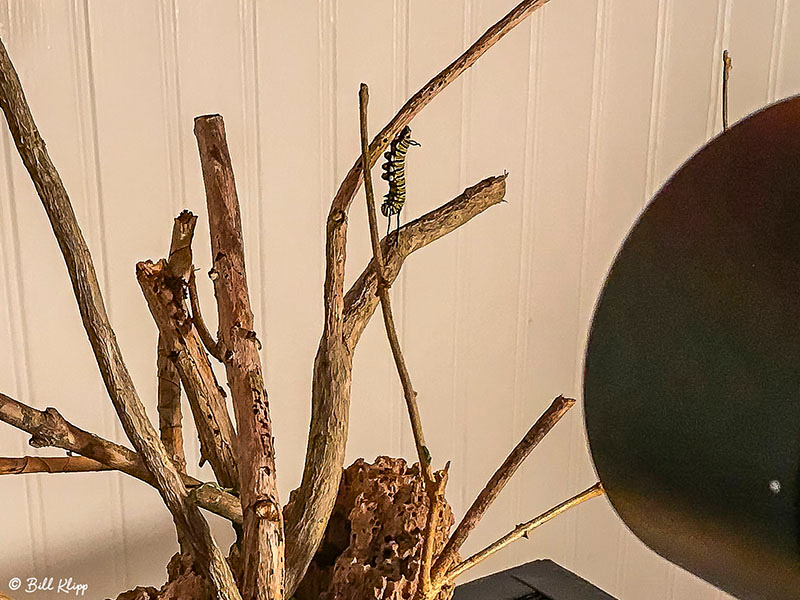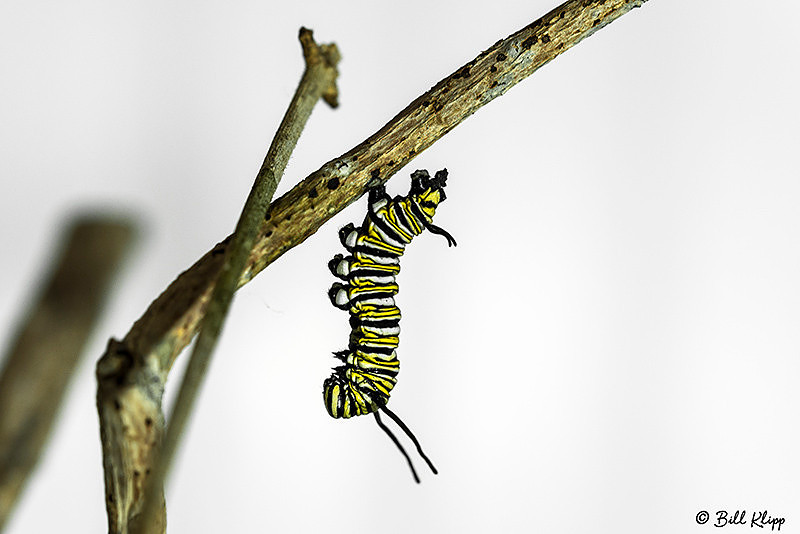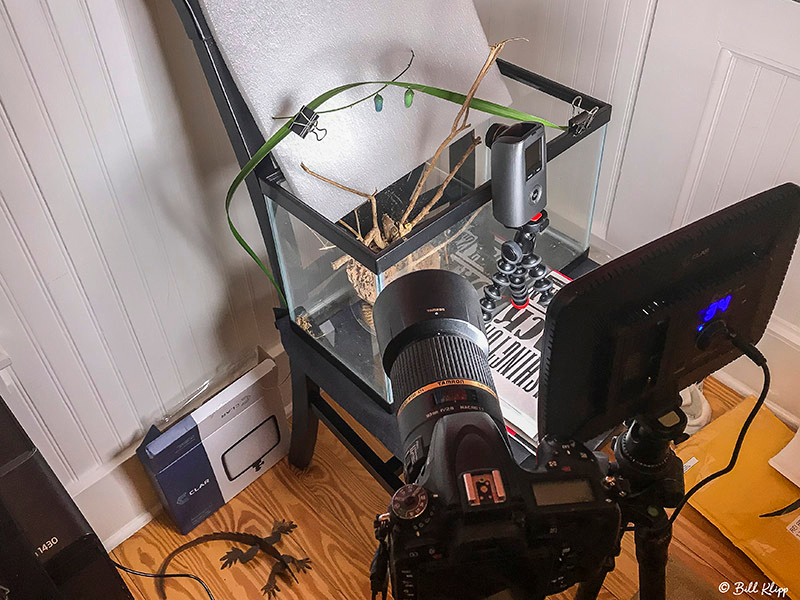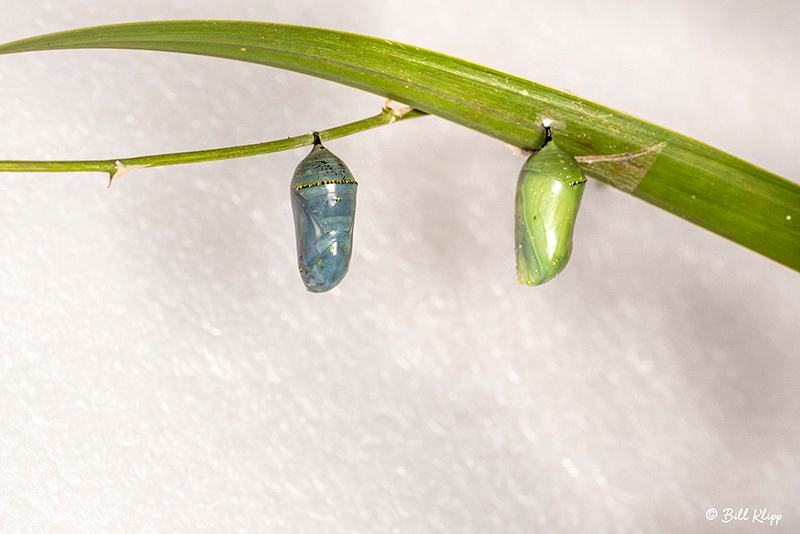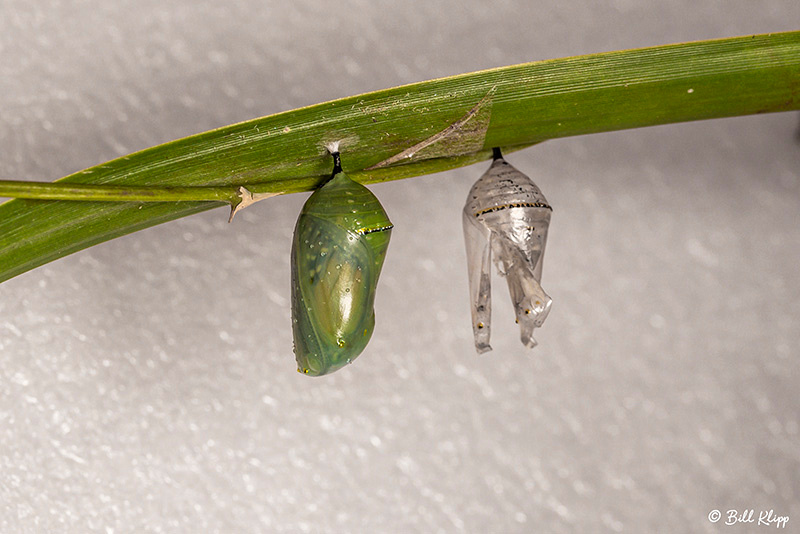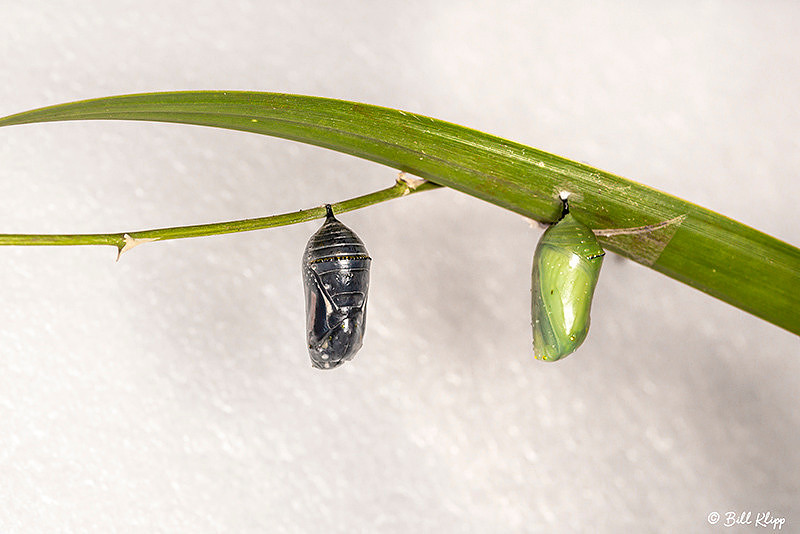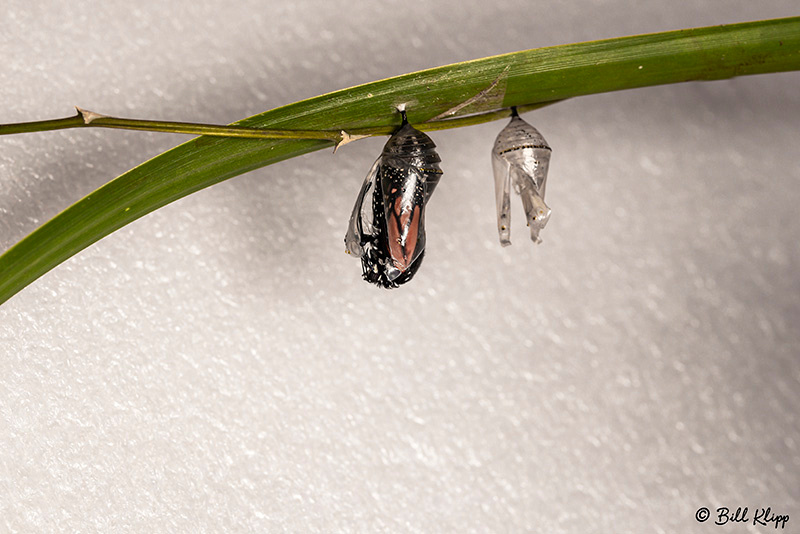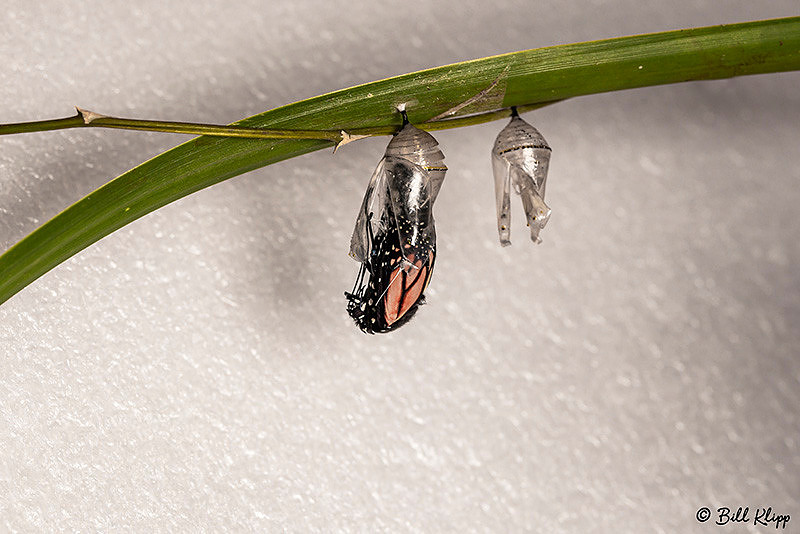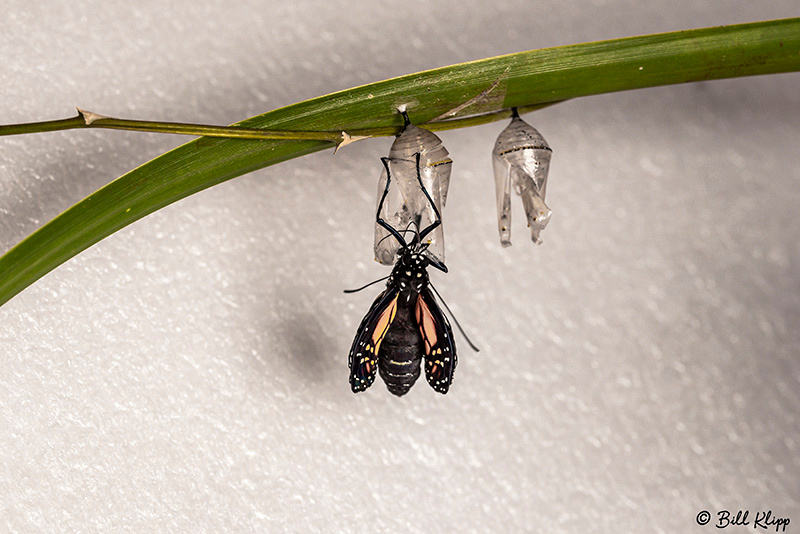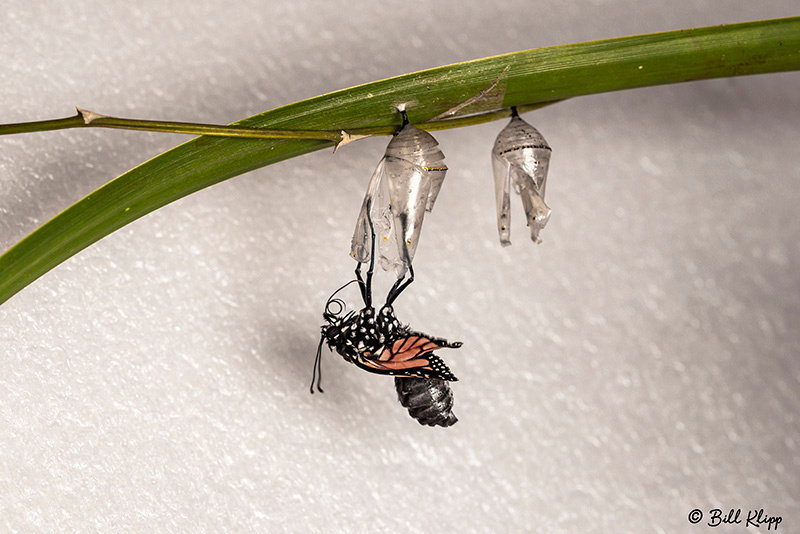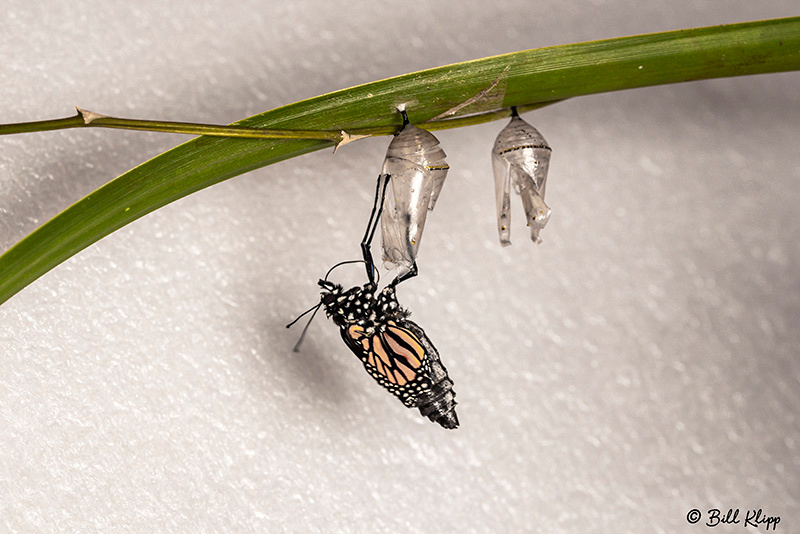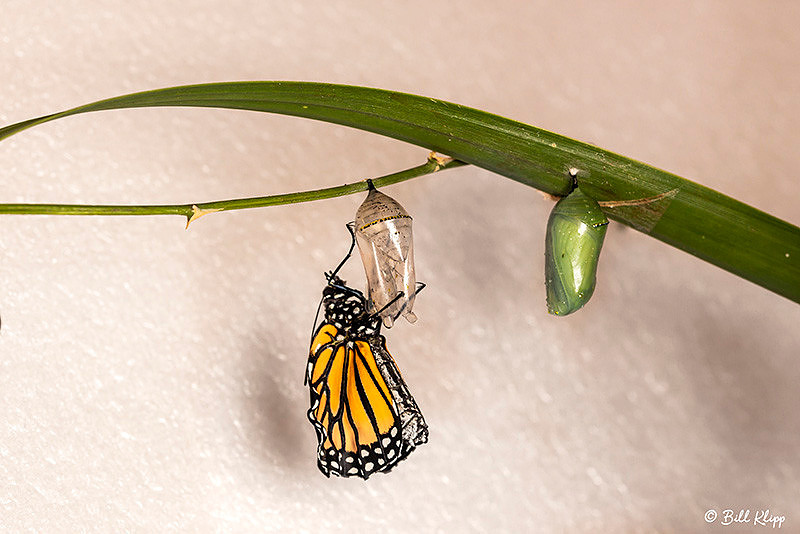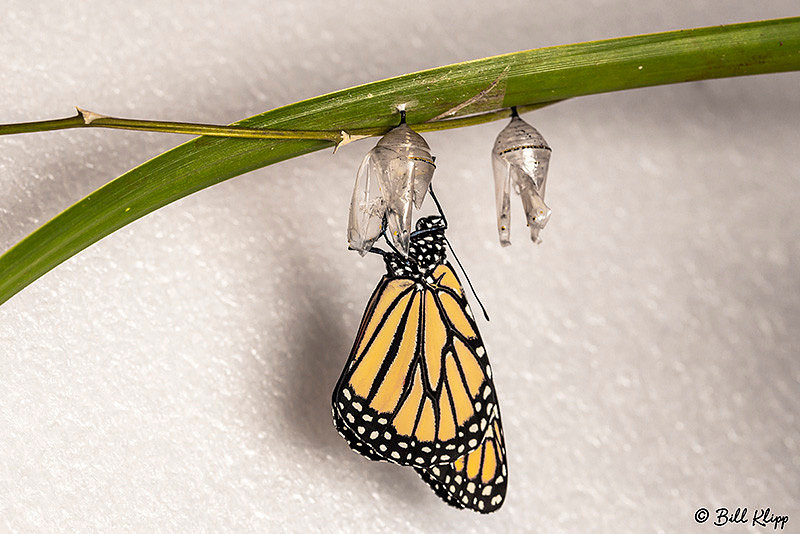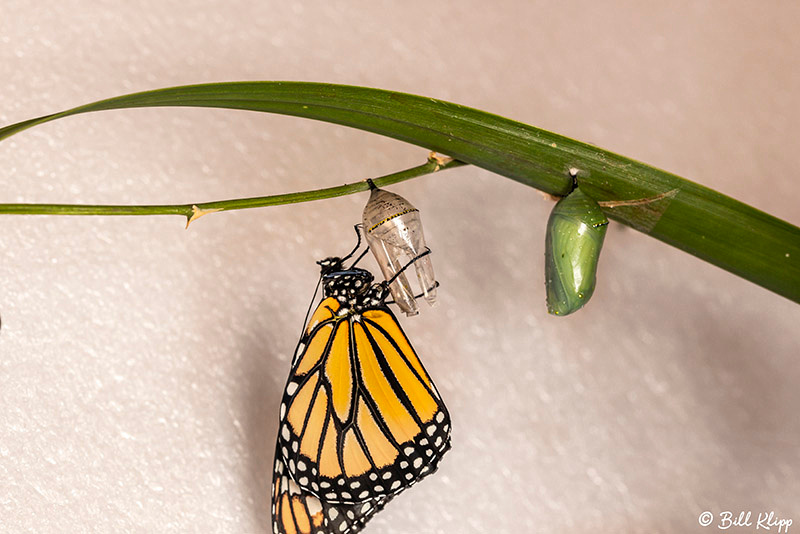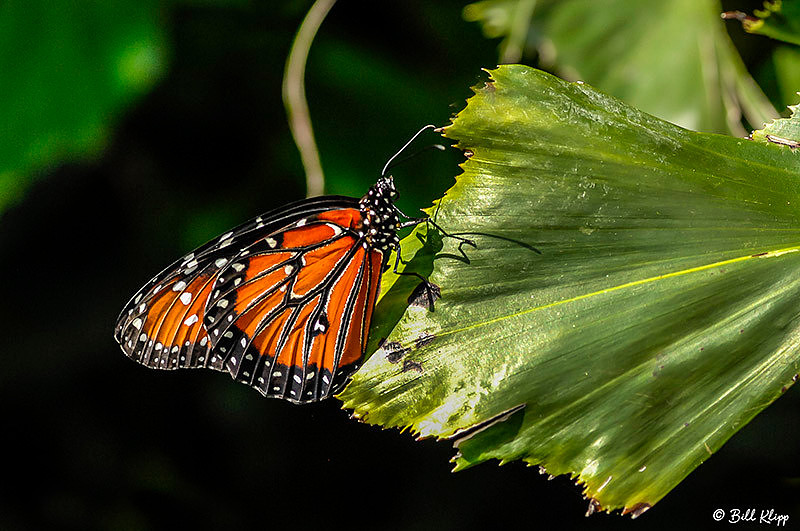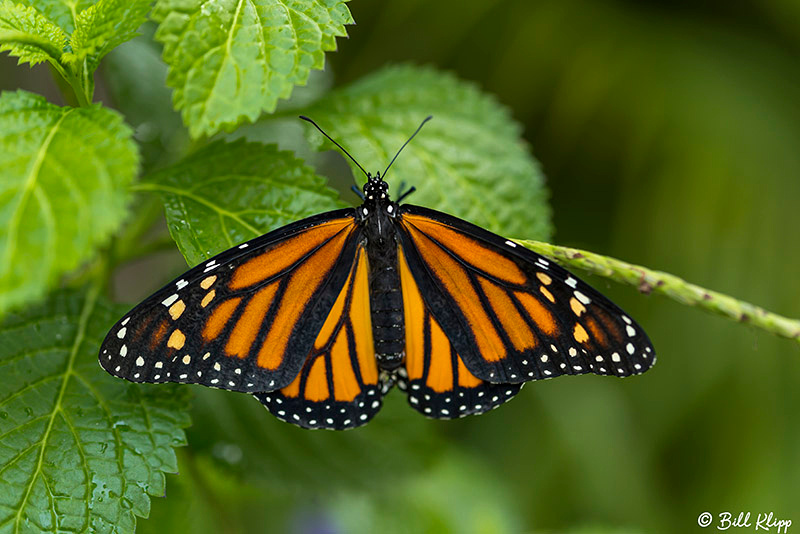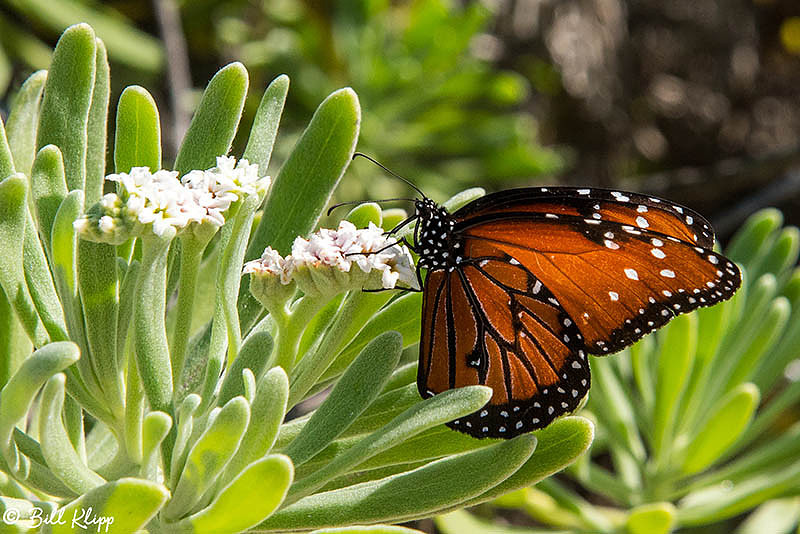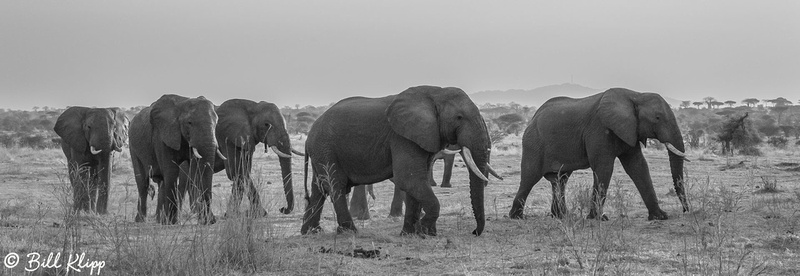


The Plight of the Monarch and the Making of a King
The Plight of the Monarch and the Making of a King The King of the Butterfly world, the iconic Monarch Butterfly is under severe pressure as populations are vanishing before our eyes. Studies have found that the total Monarch population has plummeted towards extinction with declines of 90% over the past twenty years. One potential cause of the decline being loss of habitat, especially Milkweed plants upon which the Monarch Caterpillars feed. The use of weed-resistant materials and herbicides is ruining their original habitat, and may well be the main reason leading to the threatened potential extinction of these beautiful Butterflies. The Monarchs are Vanishing, but you can easily make a difference and have fun at the same time, just plant a Milkweed plant and watch Nature unfold. (Photos were taken in our Key West backyard)
Monarch Butterfly Larva or Caterpillar finishing off a Milkweed leaf.
The Making of a King, the Monarch Butterfly Can we make a difference? Absolutely yes, here is what we did. We bought a couple of Milkweed plants at Home Depot, put them in our Key West backyard. After a short time some Monarch Butterflies stopped by and laid some eggs. The eggs turned into Larva ( Caterpillar). The Caterpillars which only eat Milkweed plants totally consumed the plants in a few days. After growing rapidly to about 2 inches and with a full belly of Milkweed, they headed off to nearby plant to “Hang Out”. After hanging out they decided to create a Pupa (Chrysalis) and in 10 days an adult Monarch Butterfly emerged and the life cycle continues. It takes a Monarch Butterfly just 28-32 days to complete its life cycle going through four stages during one life cycle, and four generations in one year. For our little experiment I set up a few cameras to try and record this remarkable transformation. So go pick up a Milkweed plant(s) (they are cheap) for your yard and watch Nature unfold.
Click above Photo for Time Lapse Video I set up two cameras and I shot over 6,000 images over about a 4 day period to capture the Monarch Caterpillar's transition into a Butterfly.
Once we got some Caterpillars on our Milkweed plant I contained it in a net tent so they wouldn't get away.
Stage 1 -- The Egg Female Monarch Butterflies lay 300-500 eggs over two to five weeks of egg laying. Each female usually lays a single egg on a Milkweed plant, by secreting a small amount of glue they attach the eggs directly to the bottom of a Milkweed leaf near the top of the plant. Eggs are only about the size of a pinhead or pencil tip and are off-white or yellow and hatch in about four days after they are laid.
Monarch Butterflies mating, or attempting to...
Notice the single egg on the leaf, there are others underneath the leaves
The ridged looking egg is the size of a pin head
Stage 2 – The Larva When the eggs hatch a tiny Larva (Caterpillar) emerges which feeds on nothing but the Milkweed leaves of it’s host plant, consuming its body weight in leaves each day. They are truly eating machines you can actually see them devouring the leaves and within a short time they will consume the entire plant. During this 9-14 days of almost nonstop eating the Caterpillar will shed its skin five times as it’s body rapidly out grows its skin. After reaching about 2 inches in length it is then ready for Stage 3 the Metamorphosis.
Our little fella just chewed and chewed for days, pooping constantly and taking periodic rests
Click above Photo for Short Video These guys are incredible "Eating Machines"
Within a few days a half a dozen Caterpillars totally consumed our Milkweed plants. Lucky for them it will grow back. BTW Do you see the last Caterpillar still on the plant at the 1:00 space?
Stage 3 -- The Metamorphosis After about two weeks of near constant eating, the Caterpillar will be fully grown and will leave the Milkweed plant to start the search for a new safe place to pupate. It will crawl 20-30 feet away seeking a safe place on a plant stem, leaf or overhang of some sort to attach itself. By laying down a silk like mat it attaches itself using silk strands, allowing it to drop and hang upside down forming a "J" shape for about a day before it begins the transformation into a Pupa or Chrysalis. To do this they shed their skin one last time revealing a jade green colored casing called a Chrysalis about an inch long. The Chrysalis starts out very soft but it quickly hardens into a protective shell like transparent casing for the Caterpillar where it will miraculously transform into a large beautiful Butterfly.
Once they started roaming off the Milkweed in search of their next resting place I contained them in hopes they would just hang out.
This Caterpillar is working on attaching itself to prepare for its transition to a Pupa Although from the outside, the 10 days of the Chrysalis phase seems to be a time when nothing is happening, it is really a time of rapid change. Within the Chrysalis dramatic changes occur as the old body parts of the Caterpillar are undergo a remarkable transformation, called metamorphosis. The 8 legged crawling Caterpillar develops large colorful wings to fly, it's leaf chewing machine parts transform into a straw-like tongue used for sipping nectar from flowers. During this time the light green colored Chrysalis will start to change color to a bluish purple and ultimately darken to black. As the transition continues you can start to see the coloring of the orange and black wings through the near transparent Chrysalis. In less than 2 weeks the transformation from Caterpillar to Monarch Butterfly will be complete and it will be time for Stage 4.
I set up a small dedicated low res time lapse camera and let it run for days taking a photo every 5 minutes. As we got closer to emergence I set up a DSLR with a macro lens. Not knowing when the big event would occur I set the camera to take a photo every 10 minutes, then as the Pupa darkened I shortened the interval to every 5 minutes, then every 2 minutes. Ultimately I dropped it to every 5 seconds as I didn't know how quickly our Butterfly would take to emerge. This required me to get up at night every few hours to check on the progress and change camera batteries. In the end I took over 6,000 images.
These two Chrysalis were formed a few days apart. The one on the right is the younger one, while the other has already started changing it's color signaling the significant transformation is underway.
One Chrysalis is now just an empty shell after the Butterfly emerged and flew away. Notice the black and orange wings starting to form and become visible.
While there is no real visible movement the Metamorphosis quietly continues as the Chrysalis gets darker and darker
Stage 4 -- The Butterfly At the end of the Pupa phase and with no real visible telltale signs the Chrysalis will crack open from the bottom and a new Butterfly emerges within a short 2 minutes. BTW one of the first things it does is poop. As it clings to the empty Chrysalis shell, it's wet folded crumpled up wings start to unfold as it pumps hemolymph (insect blood) through its body and wings. Within an hour with its wings dry and unfolded its ready to take a first short flight exercising its wings and within 4-7 days it is mature enough to mate. After the Monarch Butterfly emerges from the pupa it will fly away, feeding on the nectar of flowers and spreading pollen while it enjoys a short two to six week life span. This first generation female Monarch Butterfly will then die after laying eggs for generation number two to begin it's life cycle.
The Chrysalis starting to crack open
The new Butterfly is finally out and all crumpled up
Stretching out after being compacted in the Pupa
Periodic wing flapping helps dry off it's wings
After a short time out of the Chrysalis the Butterfly is fully stretched out. Amazing how it fit in there.
Freedom at last Click above Photo for Short Video
Feeding on the nectar of a flower and preparing for the next generation.
The Monarchs are Vanishing, but you can easily make a difference and have fun at the same time, just plant a Milkweed plant and watch Nature unfold. For more photos visit Bill’s Wildlife Photography website: Wildlife Photos Check out my youtube channel at: Bill's youtube Channel
© Bill Klipp 2019 All Rights Reserved Bill Klipp * Any use of these images requires the prior written permission of Bill Klipp the photographer, no other uses of any kind including print or electronic are permitted without the prior written permission of the photographer.
|
